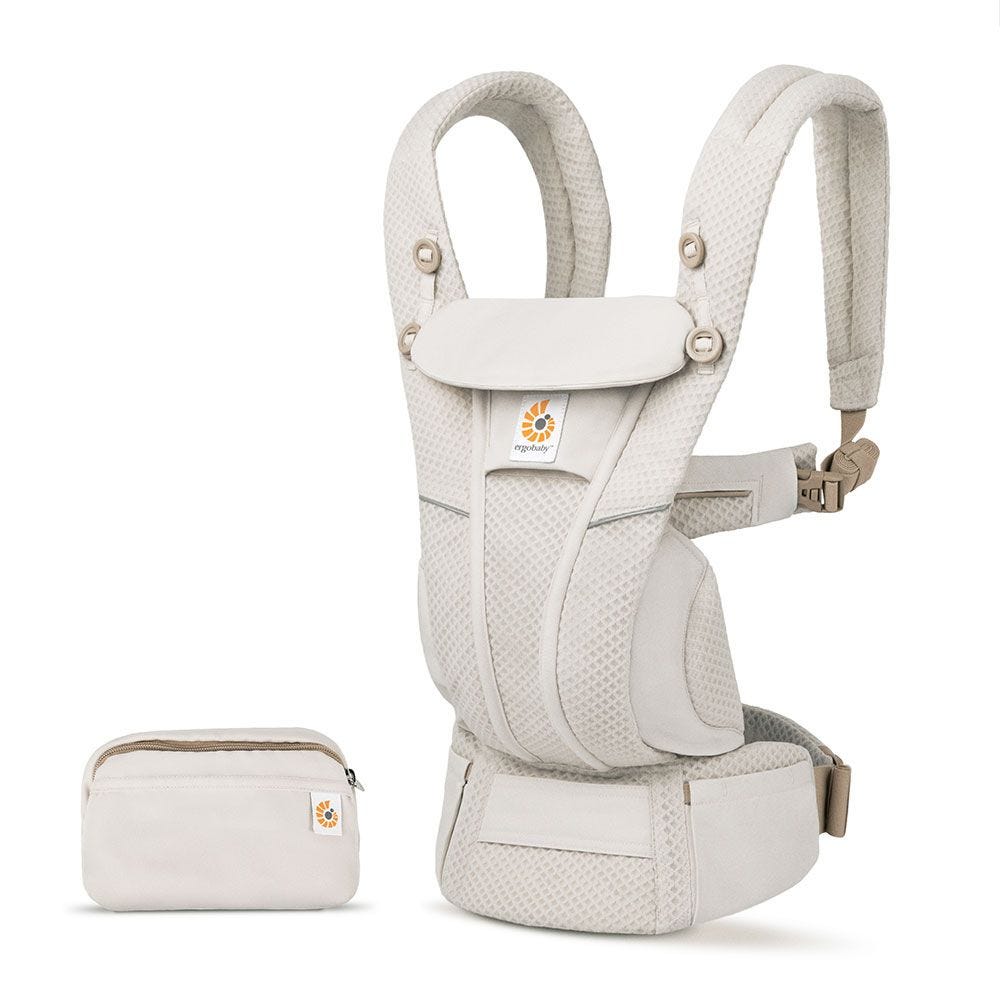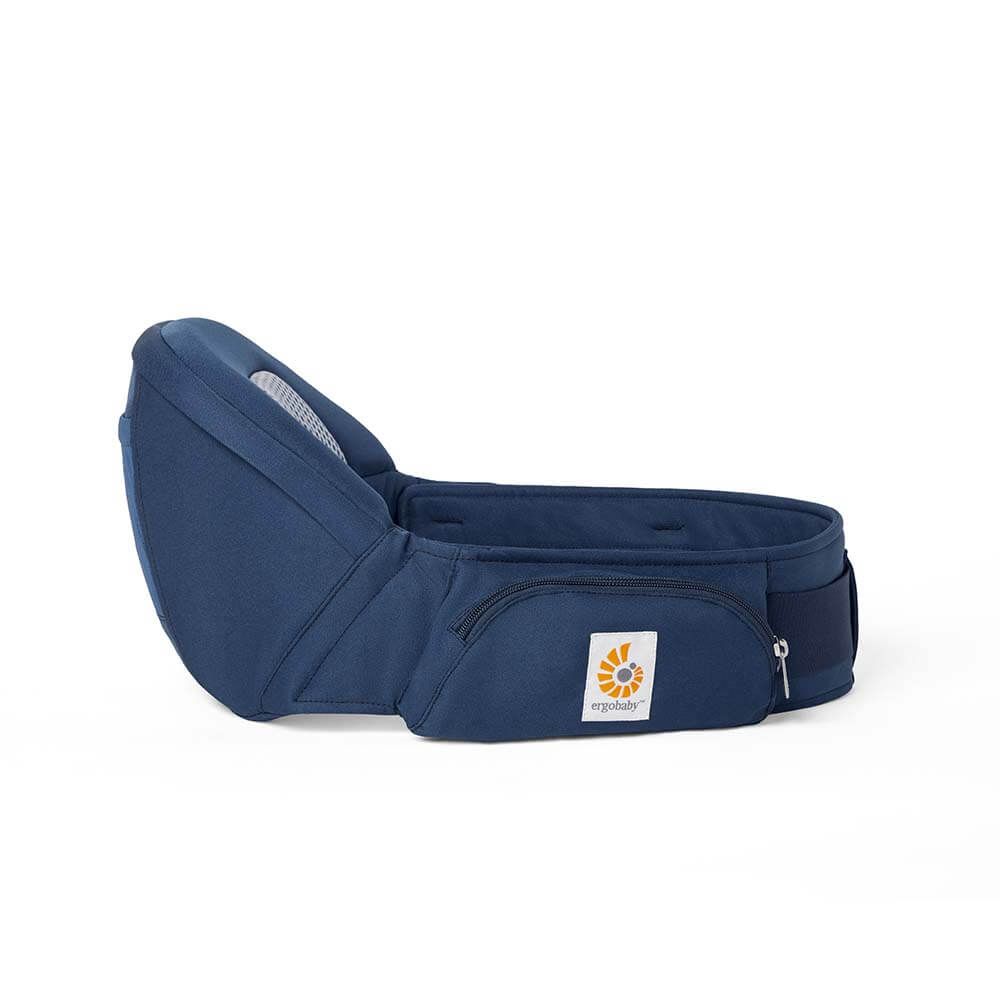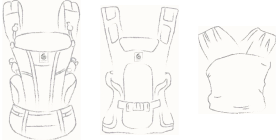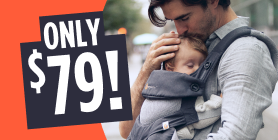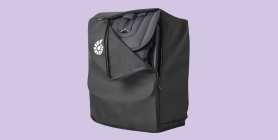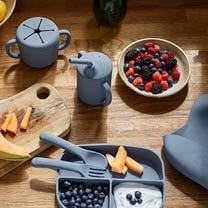Becoming a new family is a rollercoaster ride of emotions and full of anticipation. You want everything to be ready in time for when your baby arrives home. With a huge amount of baby equipment choices in the market, you will have countless questions about the different products that come up during your research.
How do you identify what is a nice-to-have item and what is an absolute must-have?
Finding the best items for your baby in the jungle of baby products is not that easy. Buying safe, high quality products that are functional and last longer can be tough. We have saved you time by providing some key insights into baby bouncers, swings and rockers.
Ergobaby Midwife expert Katrin Ritter takes a closer look at these three popular baby products.
What do you need a swing, a rocker or a baby bouncer for anyway?
It’s no surprise that many parents are turning to baby bouncers or rockers as a place for their little ones when they need some down time. However, it can be hard finding the perfect resting station, especially if you have different needs. Lots of parents are shopping around for the perfect daytime solution for their little one to rest with many of them choosing a baby swing, bouncer or rocker as a place to pop them down when needing their hands free.
It's beneficial to use an everyday helper which optimally supports your baby's development whilst offering your baby a cosy, resting place. You can keep your little one close whilst supporting them ergonomically.
So you’re looking for a baby bouncer, swing or rocker? Well, we've got your back! Here is what to consider when making this choice.
The most important factors to look for:
- Ergonomic and developmentally supportive positioning for your baby.
- Easily transportable from room to room and on the move.
- Developmentally supportive at every stage of use.
- Back-friendly and ergonomic for you too.
Swings, rockers and baby bouncers. A comparison of three everyday helpers
1. A Swing
This is a form of baby hammock on a spring that is suspended from a ceiling, a beam or a frame.
Advantages:
- Swings through a spring.
- Reminiscent of the womb.
- Responds to your child's movements.
- Can be used for a long time.
Disadvantages:
- Mostly are not ergonomic. The back of the swing is in a very curved position. Your little ones legs are not in a squat-spread M position.
- No room for head rotation. The cervical spine cannot easily stretch backwards. Therefore your little ones chin is pressed on their chest and your baby holds their head in a crooked position. In some cases, this can restrict breathing.
- Baby's heels are usually permanently supported on the base of the swing. For healthy foot development, it is important that their feet can move freely.
- Not a substitute for a bed. Due to the cosy swinging, there is a risk of falling asleep. However, it is not suitable for sleeping (see Sudden Infant Death Syndrome recommendations: Sleep lying on the back, in bed on a firm mattress).
- Limited visual contact: You cannot see your child, nor can your child see you.
- Complicated placement: Can be difficult to use alone when placing your baby in a swing.
- Doesn't transport easily. A large base can be difficult to move from room to room, let alone to take with you on holiday.
- Requires suspension: Needs a frame, door frame or hooks in a ceiling for use.
- Danger of overstimulation: Too much stimulation from the outside, can promote sleep problems and regulatory disorders (habituation effect).
- Lying position: Can promote increased spitting up.
- Little air circulation: Your baby hangs quite low in the swing.
- Inflexible: No adjustment of the angle of the lying surface possible.
- Not 100 % safe: Rarely does a swing have safety belts.
- Not easy to clean: The fabric can usually be washed at 30 degrees, mattresses rather not. Bars have to be removed first.
- Babies can see little and there is only one flat lying position.
2. A Rocker
A rocker works very similar to an adult rocking chair in that it rocks back and forth in a seated position. Many baby rockers consist of a slightly reclined seat with two curved bands at the back. The rocking motion can be done using your hands, giving the rocker a gentle nudge with your foot or some are even remotely powered.
Advantages:
- Takes the rocking movement out of parents' hands. Many rockers now offer powered rocking motion, so you no longer need to sit close and manually rock the chair with your hand or foot.
- Calming motion. The gentle rocking motion can be especially soothing early with newborns as it mimics the swaying movement of the womb
- Your child is visible.
- Optimal climate, good air circulation.
- Play and fun through play arch.
- Safe due to harness option.
Disadvantages:
- Often not ergonomic: back in a curved, even slumped position, legs not in a squat-spread position, often too upright especially for newborns.
- No room for head rotation: the cervical spine cannot easily stretch backwards, resulting in the chin being pressed onto the chest and the child holding the head at an angle, which can restrict breathing.
- Heels are usually permanently supported on the base: For healthy foot development, it is important that the feet can move freely.
- Danger of overstimulation: Can promote sleep problems and regulatory disorders through too much stimulation (movement) from outside, especially through the use of a motor.
- Constant rocking movement: increased spitting up possible.
- Energy costs: More expensive due to electricity and battery consumption and less flexible in use.
- More expensive to buy: as a baby bouncer.
- Less flexible: Often no adjustment of the angle of the lying surface possible.
- Not easy to clean: With some products, the headrest and covers are washable, with others only parts can be removed and washed.
- Doesn’t grow with the child: Therefore, it becomes too small very quickly for the baby.
- Not a bed substitute: Because of the cosy rocking, there is a risk of falling asleep. However, it is not suitable for sleeping (see recommendations on Sudden Infant Death Syndrome: Sleep lying on the back, in bed on a firm mattress).
3. A Baby Bouncer
It may seem obvious given the name - bouncer, but it’s worth confirming what it is you’re looking for. The majority of bouncers on the market are simply a seat on a wireframe that springs up and down with a slight bounce movement. The Ergobaby Evolve 3-in-1 Bouncer is an ergonomic newborn recliner, fun baby bouncer and cosy toddler chair all in one.
Advantages:
- Ergonomic: grows with the baby and provides developmentally appropriate support for the head, spine, legs (squat-spread posture) and feet, including the newborn insert.
- Sufficient space for turning the head: in the newborn insert and in the rocker.
- Back-friendly for parents & child.
- Heels and legs are free to move: due to the squat-splay position of the legs, natural posture & development.
- No over-stimulation: the baby controls the rocking by its own arm and leg movements.
- No batteries, no electricity needed.
- Less spitting up and reflux: During the rocking movement, the head is always the highest point, as only the upper body rocks and not the whole child is moved back and forth.
- Space-saving folding and quick to transport.
- Eye contact possible: your child is visible to you and can also see the parents.
- Optimal climate: good air circulation, three different materials.
- Play and fun: through child-activated rocking movement and play arch (less danger of falling asleep).
- Safe: due to removable crotch strap with buckles.
Disadvantages:
- Must be ‘bounced’ by parents until baby learns to do this for themselves.
- You would need to sit on a chair or floor to interact with your little one.
The Ergobaby Evolve 3-in-1 Bouncer is an ergonomic newborn recliner, fun baby bouncer and cosy toddler chair all in one.

